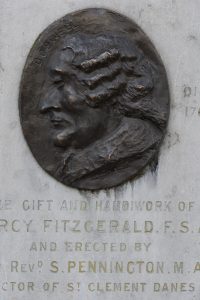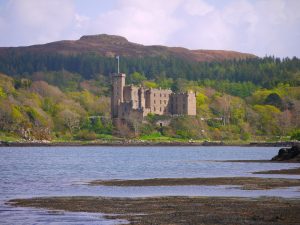Robbie Kerr, an alumnus of the London Gaelic Class, has written an interesting piece on the life of James Boswell and in particular the trip he took to the Isle of Skye with Dr. Johnson in 1773. As the pair met in Russell St. in Covent Garden, there is a strong London connection as well.
The original piece was written in Gaelic; the English below is a translation.
James Boswell in the Isle of Skye

Relief of Boswell on the Strand, London
Where was he from?
James Boswell was born in October 1740, near to the cathedral in Edinburgh. He was the oldest son of Lord Auchinleck. His father was an important judge in the High Court, with more than 20,000 acres in Ayrshire. Thomas Boswell had been given the land, and a castle, as a prize from King James IV of Scotland in 1504. His mother had royal ancestors, descended from the father of James VI. We can say with certainty that James Boswell was a nobleman, and he was proud of it.
James was not a happy child at all. His father was cold, stern, and rarely at home. His mother was fond of him, but was a fanatical Presbyterian with a head full of images of Hell and so on. He was brought up in an atmosphere of fear. He was neither strong nor healthy and he learned that he got more love and attention when he was sick, becoming skilful at feigning illness. When he was five years old he saw the Jacobites camping on Arthur’s Seat and they caught his imagination. He wanted to be a soldier.
He started school in West Bow. That was the route between the prison and the gallows. What a place for an anxious young boy! However, he was no fool and he did well enough, although he often received the belt as an “encouragement”. His grandfather died in 1749 and the family moved to Auchinleck House. James liked it there and he had a private tutor, John Dun, who James also preferred to being at school. However, in 1952 Dun was ordained as a minister and a man called Joseph Ferguson arrived in his place. James did not like the new man at all and he made himself sick on purpose. He was sent to Moffat in the Borders where there was a spa with well-known healing properties. He got better after a while and returned home.
He started at Edinburgh University at 13 years of age, as was common in those days. His father did not have such tight control over him at university and James was a successful student, learning Latin, Greek, French, Mathematics and Ethics. That was good training, useful for a career in the law: his father was a lawyer, as his grandfather had been. He was not so shy and he made new friends, especially William Temple and John Johnson (known as “Grange”). That friendship lasted his whole life. He became confused in religious matters in 1757, asking questions like, Do I have free will? He suffered from depression and went to Moffat again to convalesce. His health improved and he returned to Edinburgh after a while. He was up and down his whole life. Some say that he suffered from schizophrenia. He spent his final year at university studying law and going to the theatre. He started writing poetry. He thought that he would become famous in the world of literature. He was captivated by the stage and the lives of the actors. He was young, handsome and noble; he had affairs with some of the actresses, including one who was married. That was good for his self-esteem, but dangerous; the Church was also strongly against the theatre. Boswell’s father heard something about the way his son was conducting himself and put a stop to it.
Boswell was sent to the University of Glasgow in order to carry on his education. Although he did not enjoy life in Glasgow as much as in Edinburgh, things were not too bad. He wrote a letter to Grange saying that the town was not so gloomy as he had expected. He had at least one friend there. Francis Gentleman was staying in Glasgow. He had lost his job in the theatre in Edinburgh and he was trying to make a living as a writer. He published an adaptation of the novel “Oroonoko” by Aphra Benn and dedicated it to Boswell. Adam Smith was a lecturer at the university at that time and Boswell attended some of his lectures. Boswell thought that he was an intellectual hero, and a very nice man. Boswell was restless, however. The days were long and slow in the academic world and he decided to undergo a personal revolution. He was going to become a Catholic, even a priest or a monk. He would lose his job, his income, his inheritance and his friends, but he did not care. He hired a horse and fled to London.
The Young Man in the Big City
Boswell hid away for a fortnight, but his father found out where he was. He asked the Earl of Eglinton to deal with the situation, and he certainly succeeded. Boswell was taken into a world of people who were noble, licentious, rich and important. He met prostitutes and the heir to the Crown. He went to Newmarket to see the races and into taverns, drinking from dusk to dawn. After a while he lost interest in religion. He decided to become an officer in the Guards, but that was expensive. His father came to London and they made an agreement. Boswell would go back to Edinburgh for two years, trying to become qualified as a lawyer, with an allowance of a hundred pounds a year. If he succeeded, his father would give him funding to try to get a commission. Boswell was reluctant, but eventually he agreed.
The poor student was not happy at all. His father was a hard teacher, he had to live at home and he was suffering from venereal disease—and not for the last time, either. It is said that he suffered seventeen bouts of it throughout his life. He tried to speak with an English accent; he wanted to be as elegant, refined and ‘English’ as possible. He wrote a lot of poetry, but the verses were not good and he did not become famous as he had wanted. His dream was to live the life of an officer and nobleman in the literary world of London. His friends told him that was impossible, that the Army was reducing in size rather than recruiting, but he tried again and again. Eventually, he succeeded at his oral examinations in law on 30 July 1762. He was a lawyer! His father was happy and increased Boswell’s allowance to £200 a year. He had permission to return to London, where he met Samuel Johnson on 30 July 1763. He was introduced as “James Boswell, from Scotland”. He added, “Though I cannot help that”. Johnson replied “Sir, that, I find, is what a very great many of your countrymen cannot help!”.

Plaque commemorating first meeting of Johnson and Boswell, Covent Garden, London.
The pair became close. Johnson had published “The Dictionary of the English Language” in 1755 and he was famous throughout the world when he met Boswell. However, he was arrogant, full of himself, always looking for an audience who would be ready to praise his wit; and Boswell was certainly willing to take part in that shining circle! Johnson was a Tory and fond of Boswell’s stories about the powerful hereditary clans and chiefs. He thought that the Scots were barbarous, but that perhaps it would be worth taking a look at their country. After much persuading, he agreed to take a tour together with Boswell in 1773.
The pair in Scotland
They left Edinburgh when the law-courts closed, on 18 August 1773, travelling north in a little carriage. They went through St Andrews, Dundee, Montrose, Aberdeen, Banff, Elgin and Fort George, reaching Inverness after ten days. They rarely had to stay in hotels. Due to his father, Boswell had a marvellous network, taking in ministers, academics, army officers, noblemen, lawyers and so on; and with Johnson’s fame as well, they got a warm welcome practically wherever they went. Although Johnson was, in general, happy enough with the attention, he had not liked Scotland so far. He was horrified by the ruins of cathedrals and saddened by the lack of trees.
After Inverness, the ground became rough. The carriage was useless and they had to hire horses. They went down the south side of Loch Ness to Fort Augustus and then to Glen Shiel. Johnson was in his element – this was the true Highlands right enough, and the local people spoke no English at all. The terrain become even wilder and steeper and Johnson almost fell off his horse, but eventually they reached Glenelg and saw the sea.
The Isle of Skye
They got a small boat and a crew and went to Armadale beach, where Sir Alasdair MacDonald was waiting for them, because Boswell’s network was still strong, and that was fortunate – according to Johnson, there was no hotel at all on the island apart from one at Sconser. The knight preferred his comfortable new house, rather than castles, although there was a piper there to entertain the guests. They tried to persuade MacDonald that high rents and emigration were dangerous and that the old feudal days were better, but he did not agree. When Johnson advised keeping a store of arms, he answered that they would rust. While they were in Sleat, Johnson asked about “cuaran” (a type of simple shoe) that he had seen. One man told him they were made in every house and were cheap, but another told them that they were purchased from tinkers and were very expensive. According to Johnson, that was evidence that every Gael was untrustworthy and a liar… They left Armadale on the 6th of September, riding to Broadford and then to Coire-Chattachan, the same place where the author Thomas Pennant had stayed in 1772. They got a warm welcome from the tacksman of MacKinnon and his wife. They had to stay there for two days because of bad weather, but that was not too hard on them, as there was good food, a party in the evening and pretty young ladies as well. The flirting was in Gaelic (or ‘Erse’) and Boswell was happy enough, but Johnson could not take part and went to bed early.
The weather improved the next day and at breakfast time a message came to say that there was a boat waiting to take them to Raasay. They went to the beach where they found a strong boat with four oars and a ready crew. The sea was wild; Johnson’s spurs fell in the sea and were lost, which bothered him greatly. They came to land at a rocky place at six o’clock in the evening and met Lord Raasay and the MacLeod himself. He invited them to visit him at his castle in Dunvegan. They accepted with pleasure. The party in the evening was made up of thirty people, with plenty of drink, good food, a fiddler and lively dancing in honour of the famous guests, who were as happy as sandboys.
The next morning, they ate oatcakes made with ‘greadan’ or parched grain. They liked the taste, but they thought the process wasteful. Then Boswell took a tour round the island. Johnson was happy writing what he had heard, but Boswell wanted to see the little island with his own eyes. As usual, he wrote a detailed account of everything he saw as soon as possible in his diary or ‘Journal’. It is this methodology which has made Boswell such an important writer, right up today. The landlord had kept the rents low throughout the island and because of that, no-one at all had left, as they commonly had in other areas. Bad weather delayed them, but they left on Sunday, although that was against their principles.
They had dinner in a hotel in Portree and then they visited Flora MacDonald, who was famous for helping Bonny Prince Charlie when he was fleeing in 1746. Johnson’s nose was bothering him, but eventually he got the whole story, how it had happened, from the horse’s mouth. They followed on towards Dunvegan but sailed over a loch in order to avoid eight miles of hard riding. They learned that this trick was common enough in the Highlands. The land became wild, rocky and boggy and the two of them were very tired when they reached the castle at long last.

Dunvegan Castle, Skye
Johnson was overjoyed to be back in ‘civilisation’, saying “You have saved the best till the last!” and when Johnson was happy, Boswell was happy too. Their relationship was like that between a master and a puppy;—or perhaps Boswell was being crafty, thinking already of his great work, “The Life of Samuel Johnson”? Anyway, they were both of the same view, that Dunvegan was fantastic. As a lawyer, Boswell was skilful at asking leading questions, and now he had found a woman who was just as skilful as he was. Boswell and Lady Macleod could encourage Johnson to a remarkable level, he in his element, like a king holding court, delivering strong and controversial opinions on subjects like: Is the adultress worse than the single lady of easy virtue?”; “Is gout hereditary”; “Are people naturally good or bad”; “Is there a difference between wisdom and eloquence”; “The advantages of vegetable rather than animal fibre”, and so on; and Boswell recorded every word as closely as he could. Johnson was incredibly knowledgeable, strong opinions or not. Boswell wrote: “Today, he explained everything about how coins are made, and the minister, who was present, was certain he had been brought up in a mint. This evening, he explained everything about how beer is made, and the poor minister was certain he had been brought up in a brewery.”
Eventually, after a good while, Boswell recommended that they should go on, and they left, sadly, on the 21st of September. They reached the house of the sheriff, Donald Macleod, at Ullinish about six in the evening. They asked here, as they had asked in many other places, about Fingal and James Macpherson. They found someone who knew someone else, who knew someone else, who had seen the [Ossian] manuscript, long ago. They got the same sort of answer when the asked about the second-sight. Wealth and power are not always useful to the man who seeks the truth. After a day or two more, they went to Talisker where they received a warm welcome from Colonel MacLeod, the son of the Chief and met the son of his sister, who was the Lord of Coll, although he was still young. Boswell and Johnson became fond of him, because he was lively and helpful to him. Money had become scarce and it was not easy to get more because there was no bank or even any shop on the island. Eventually, they found a captain of an emigration ship who was willing to change a cheque for 30 pounds. They carried on until they returned to Coire-Chattachan, where Boswell drank too much. He went to bed at five in the morning. At nine o’clock he was hungover and Johnson, who was always abstemious, scolded and mocked him cruelly.
They returned to Sleat. They stayed at the minister’s house at Ostaig and then at Armadale again, waiting for suitable weather for sailing. They left the Isle of Skye on the 3rd of October and never returned. They made a tour of some of the southern islands and then returned to the mainland and to Edinburgh. Johnson followed on to London on his own.
After everything…
Johnson published “A Journey to the Western Islands of Scotland” in 1775. “Journal of a Tour to the Hebrides” by Boswell appeared much later, in 1786. Penguin classics published both of them in a single book in 1984. We can look at the same events from different viewpoints. Johnson’s prose is better. He gets hold of the nub of the matter immediately. His opinions are strong and controversial, but always interesting. He had to be at the heart of every conversation. What an egoist! Boswell was outrageous enough at times, but compared to Johnson he is quiet and well-behaved. It is obvious he is a lawyer, making his case step-by-step. He was methodical and diligent, writing his Journal nearly every day. He brought us a ‘live’ account of the conversations as they happened – a style which was unusual in his own time. That style became renowned when he published his magnum opus “The Life of Johnson”, in 1791. He was famous at last…

Statue of Johnson on the Strand, London

